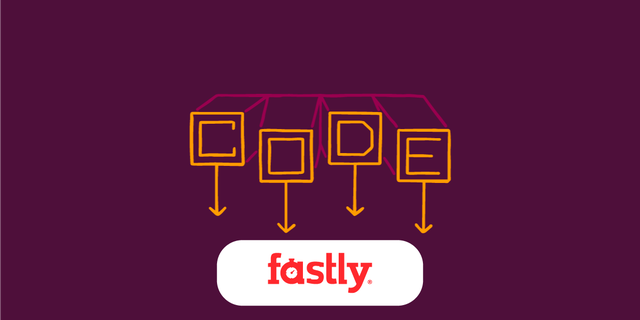Engineering
Page 1 of 9
-
Deploy for Performance: Fastly’s Principles of Infrastructure Diversity and Soft Control
Brian Haberman
Discover Fastly's core resilience principles: Infrastructure Diversity prevents outages, and Soft Influence optimizes traffic for peak performance.
Performance+ 2 more
-
How Fastly and Yottaa Transform Site Performance with Early Hints
Ajay Bharadwaj, Terri Allegretto
Early Hints for Compute is now generally available, dramatically improving website performance and user experience by preloading essential resources.
Compute+ 4 more
-
VCL Support for Parameters in Custom Subs
Katherine Flavel
Learn about Fastly's VCL syntax updates, including return values and parameters for custom subroutines, enabling better code reuse and abstraction.
DevOpsEngineering
-
Building Scalable Waiting Rooms with Fastly Compute
Brock Norvell, Terri Allegretto, + 1 more
Control website traffic and prevent server overload with Fastly Compute waiting rooms. Learn how to build scalable, customizable queues for high-demand events.
Compute+ 4 more
-
Optimizing Web Performance: Unpacking Fastly’s Intelligent Compression Defaults
Stephen Stierer, Anjan Srinivas
Optimize web performance with Fastly's intelligent compression defaults. Learn how Gzip and Brotli shrink payload sizes, reduce costs, and speed up your site.
CDN & Delivery+ 2 more
-
Rewriting HTML with the Fastly JavaScript SDK
Sy Brand
Boost web performance with Fastly’s JS SDK v3.35.0. Use the new streaming HTML rewriter to customize, cache, and transform pages faster and more efficiently.
Compute+ 4 more
-
A Smarter ACME Challenge for a Multi-CDN World
Shiloh Heurich
Optimize your multi-CDN setup with Fastly's new dns-account-01 ACME challenge. Eliminate label collisions and enhance certificate management.
CDN & Delivery+ 3 more
-
How to Tame Varnish Memory Usage Safely
Daniel Axtens
How Fastly turned a shelved Varnish idea into 25% fewer memory writes and real system-wide gains.
CDN & Delivery+ 4 more
-
Design for Chaos: Fastly’s Principles of Fault Isolation and Graceful Degradation
Brian Haberman
Learn how Fastly builds a resilient CDN through fault isolation & graceful degradation. Discover our principles for minimizing disruption & ensuring continuous service.
CDN & Delivery+ 4 more
-
Fastly’s Pillars of Resilience: Building a More Robust Internet
Brian Haberman
Discover Fastly's Pillars of Resilience: unwavering availability, minimized latency, and disruption resistance for a robust internet experience with our global network.
CDN & Delivery+ 4 more
-
The Tools Gap: Why Developers Struggle to Code Green
Alina Lehtinen-Vela
77% of developers want to code sustainably, but most lack the tools to measure impact. Fastly’s survey reveals the barriers and opportunities in green coding.
Industry insightsEngineering
-
Publish your website without a host
Sue Smith
Deploy static sites to Fastly Compute directly from your browser or IDE. Publish blogs, apps, and websites at the edge without hosting.
CDN & Delivery+ 3 more
-
Teach Your robots.txt a New Trick (for AI)
Brooks Cunningham
Control how AI bots like Google-Extended and Applebot-Extended use your website content for training. Update your robots.txt file with simple Disallow rules.
CDN & Delivery+ 3 more
-
Bridging the real-time testing gap: Fanout support in local development for Fastly Compute
Katsuyuki Omuro
Fastly Compute now supports local Fanout testing, letting you build and validate real-time features without deploying to production.
Engineering+ 2 more
-
Powering PyPI with Advanced Traffic Engineering
Joe Williams, Stephen Strowes
PyPI serves millions daily. See how Fastly’s Individual Provider Anycast unlocks faster, smarter routing for Python’s package index.
CDN & Delivery+ 4 more
-
Vibe Shift? Senior Developers Ship nearly 2.5x more AI Code than Junior Counterparts
Alina Lehtinen-Vela
Fastly’s survey shows senior developers trust gen AI tools enough to ship 2.5x more AI code, while juniors stick to traditional coding and caution.
Industry insightsEngineering
-
Request Collapsing Demystified
Stephen Crim
Boost website performance with request collapsing! Learn how it improves efficiency, reduces origin load, and optimizes caching for a snappy user experience.
Performance+ 2 more
-
Demystifying Fastly’s Defense Against HTTP Desynchronization Attacks
Brian Haberman, Sandra Escandor-O’Keefe, + 1 more
Learn how Fastly's robust architecture and strict protocol parsing defend against HTTP desynchronization attacks, ensuring your web applications are secure.
Security+ 3 more
-
ETags: What they are, and how to use them
Leon Brocard
How to optimize your ETags to speed up your site and reduce calls to your origin without requiring significant code refactoring or content overhaul.
DevOps+ 2 more -
How to Control and Monetize AI Bot Traffic Using Fastly and TollBit
David King, Lorraine Bellon
Monetize AI bot traffic! Fastly's Bot Management and TollBit have teamed up to offer granular control, performance, and flexibility to manage bots & unlock new revenue.
Security+ 2 more














